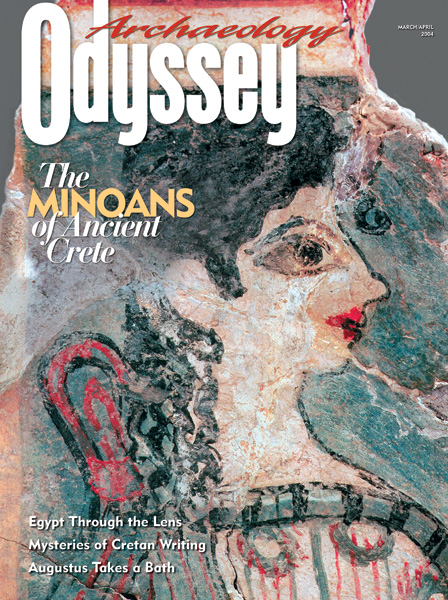Archaeology Odyssey, March/April 2004

Features
To think of the Minoans, the Bronze Age inhabitants of Crete, is to think of snake-goddess figurines, sculpted and painted bulls, frescoes depicting athletes, and tablets inscribed with strange—and sometimes indecipherable—writing. We imagine palaces with broad staircases, paved courtyards and painted walls commanding splendid views of the surrounding terrain. As the Booker Prize-winning British […]
Love Crete or not—and I have yet to meet anyone who has spent much time there and doesn’t—it is hard to think of anywhere else on earth where so many firsts and mosts are crammed into a space so small. At scarcely more than 3,000 square miles in area, it comes only fifth in […]
Around the turn of the last century, a young Bostonian named Harriet Boyd wanted very much to dig at Corinth. She was a student at the American School of Classical Studies in Athens, which in 1896 had begun important excavations in the ancient city. However, the school’s director, Rufus Richardson, would have none of it: Field archaeology, he believed, was not a suitable activity for a proper young woman.
As children we learn that A is for Apple, B is for Boy and C is for Cat, and that CAB is the machine we use to travel downtown. We also sing the alphabet song, whose words are the alphabetic signs sung in a sing-song rhythm that helps us to remember them all. We […]
In 3 B.C. the Roman emperor Augustus should have felt on top of the world. He had conquered most of western Europe, and the might of his Roman legions stretched deep into North Africa and the Near East. Culturally, he was presiding over a golden age, represented by some of the greatest poets who […]
